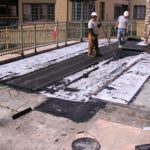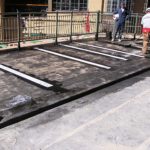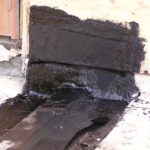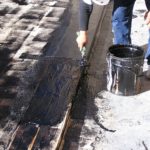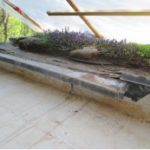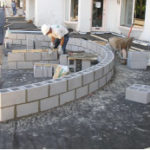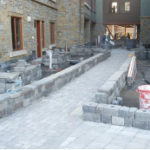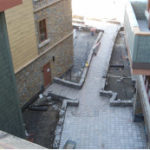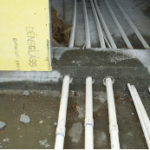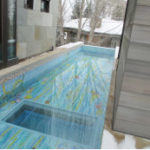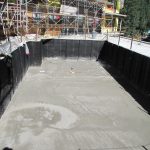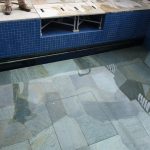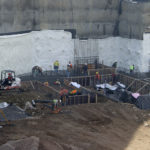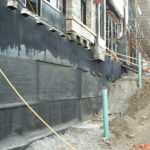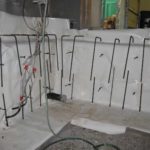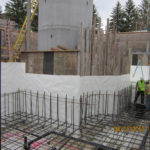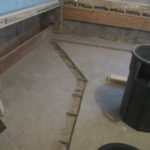Rooftop Terraces and Decks
Waterproofing systems on rooftop terraces and decks are particularly challenging since there are typically a plethora of amenities and tie-in details at doors, drains, handrails and guardrails, and other features. Special detailing is often required at lift-and-slide door details, glass handrail conditions, and stairways. The need for insulation above interior finished spaces and specialty pavement designs and configurations also present unique conditions, as well as achieving the necessary drainage from both the pavement level and the waterproofing membrane level.
Extensive experience in evaluating water leakage and deterioration problems with rooftop terraces and decks has allowed BC&E’s professional staff to fully understand the necessary aspects of appropriate waterproofing membrane selection, design of details including the proper interface with perimeter conditions, drainage devices, and amenities, and selection and design of pavement systems. BC&E personnel have expertise in designing repairs to rooftop terraces and decks which exhibit problems, as well as providing appropriate direction in new construction projects.
Exterior Plazas
Horizontal waterproofing systems are utilized in exterior plazas. In many cases, these systems are constructed over finished, occupied spaces and require an exceptionally high level of protection against water leakage with a long service life. The design of horizontal waterproofing systems is challenging due to the wide variety of conditions which these systems will encounter. Exposure to harsh environmental conditions play a significant role in the selection of materials and assemblies. Performance and aesthetic design considerations for both intensive vehicular and pedestrian usage includes the appropriate selection of pavement or decking materials, and correct integration of related architectural features, such as stairways, handrails and guardrails, planters, water features, pools, hot tubs, and exterior furnishings. Improper design and construction of these systems can cause significant damage and can be extremely disruptive and costly to repair.
BC&E’s professionals understand the importance of these features, and know that proper selection of materials, attention to details, and quality installation of waterproofing and pavement systems is critical to the success of these systems. By evaluating hundreds of performance problems associated with plazas, BC&E has developed expertise in correcting such problems. BC&E utilizes this expertise in designing repairs for plazas of all sizes, and provides valuable consulting services related to these features in new construction projects.
Landscaped Planters
Plaza areas often include landscaped planter areas to enhance the natural environment. Waterproofing these planters present a multitude of challenges in regards to ensuring healthy plant growth, irrigation, drainage, and often specialty lighting systems.
BC&E has significant experience in diagnosing problems with landscaped planters, and understands the challenges of these areas in new construction to reduce the risk of leakage problems.
Pools, Water Features, and Fountains
Water feature elements create attractive amenities on plaza areas. However, placing features involving water above interior finished space is a particular waterproofing challenge, as many of these features need to be connected to mechanical and electrical systems often located away from the water feature.
BC&E’s extensive experience has included evaluating problems with these features, and designing waterproofing systems to provide a high level of watertight performance.
Foundation Walls
Proper design and installation of below-grade waterproofing systems on foundation walls is essential to maintain a high-level of protection against water leakage over the long-term, particularly where basement areas are intended to be occupied. Site conditions can create unique challenges which include high groundwater levels, unusual soil conditions, and site/lot limitations, and are important factors in the selection and design of below-grade waterproofing systems. Water leakage problems through below-grade waterproofing systems are often difficult and expensive to correct, and the damage caused by water leakage can range from merely unsightly staining to significant problems with structural deterioration, among other things.
BC&E’s professional expertise has allowed for unique insight into problems with these types of features. BC&E has the know-how to design these systems to reduce the risk of future problems in the design of these features in new buildings and additions. BC&E’s familiarity and knowledge of waterproofing systems and detailing during the design and construction stages facilitates their long-term success.
Below-Slab Waterproofing and Tanked Structures
In some instances, building structures are required to be located below the permanent groundwater level, resulting in a “tanked” structure. In other instances, the lower-level floor slabs-on-grade may be exposed to hydrostatic water pressure, and may require below-slab waterproofing to protect the building interior from water leakage. These unique conditions require a thorough understanding of the site and soil conditions, the groundwater conditions, the structure, and the performance use and expectations related to the building interior.
BC&E has developed the expertise to address these types of structures and conditions, aimed at providing the long-term performance expected by building owners. From evaluating the structure’s unique features and the exposure conditions, BC&E has the experience to develop recommendations for waterproofing materials, systems, design, and detailing, as well as address back-up and redundant systems to mitigate potential problems.
Download a PDF of this page.

